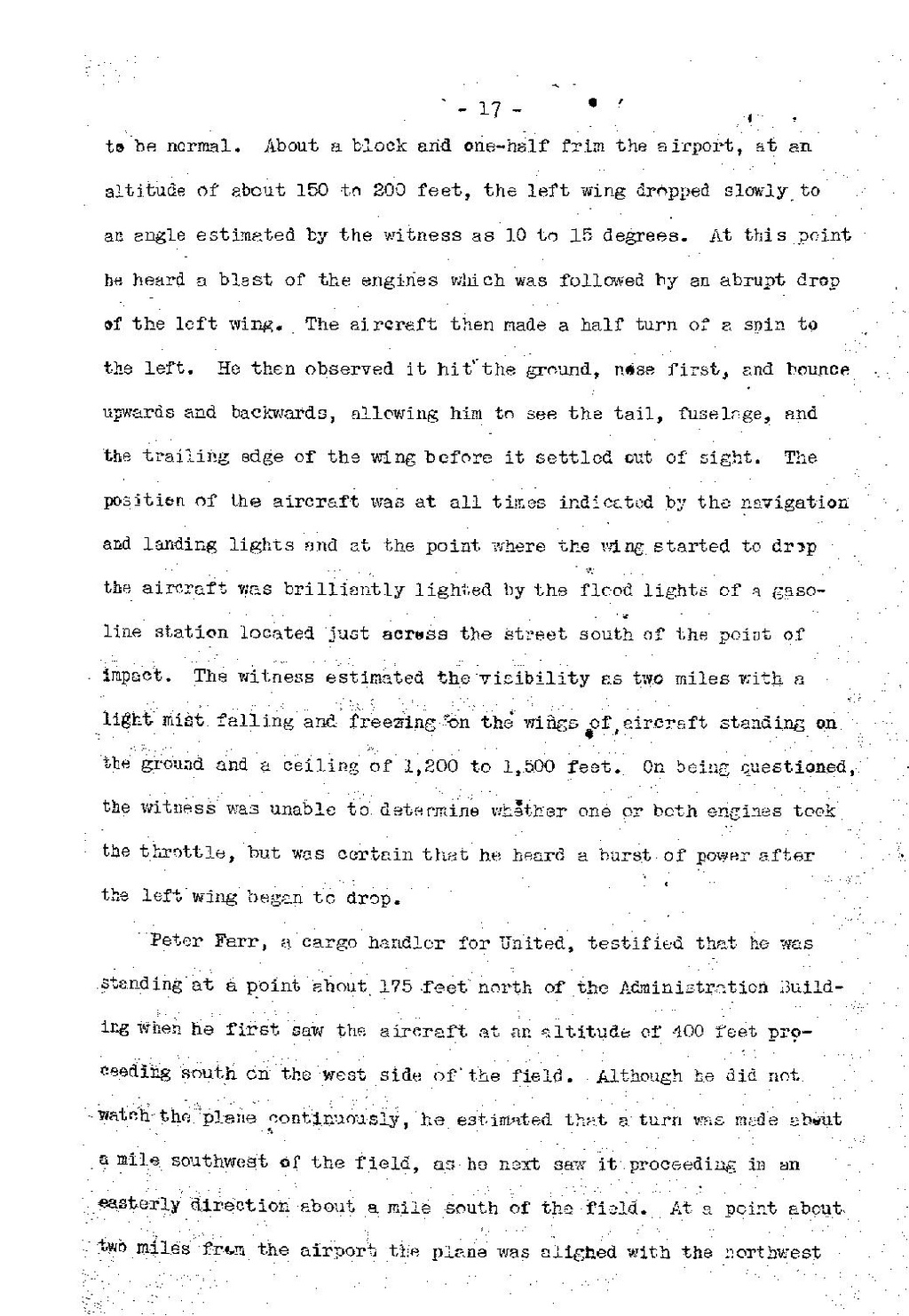- 17 -
to be normal. About a block and one-half firm the airport, at an altitude of about 150 to 200 feet, the left wing dropped slowly to an angle estimated by the witnesses as 10 to 15 degrees. At this point he heard a blast of the engines which was followed by an abrupt drop of the left wing. The aircraft then made a half turn of a spin to the left. He then observed it hit the ground, nose first, and bounce upwards and backwards, allowing him to see the tail, fuselage, and the trailing edge of the wing before it settled out of sight. The position of the aircraft was at all times indicated by the navigation and landing lights and at the point where the wing started to drop the aircraft was brilliantly lighted by the flood lights of a gasoline station located just across the street south of the point of impact. The witness estimated the visibility as two miles with a light mist falling and freezing on the wings of aircraft standing on the ground and a ceiling of 1,200 to 1,500 feet. On being questioned, the witness was unable to determine whether one or both engines took the throttle, but was certain in that he heard a burst of power after the left wing began to drop.
Peter Farr, a cargo handler for United, testified that he was standing at a point about 175 feet north of the Administration Building when he first saw the aircraft at an altitude of 400 feet proceeding south on the west side of the field. Although he did not watch the plane continuously, he estimated that a turn was made about a mile southwest of the field, as he next saw it proceeding in an easterly direction about a mile south of the field. At a point about two miles from the airport the plane was aligned with the northwest
